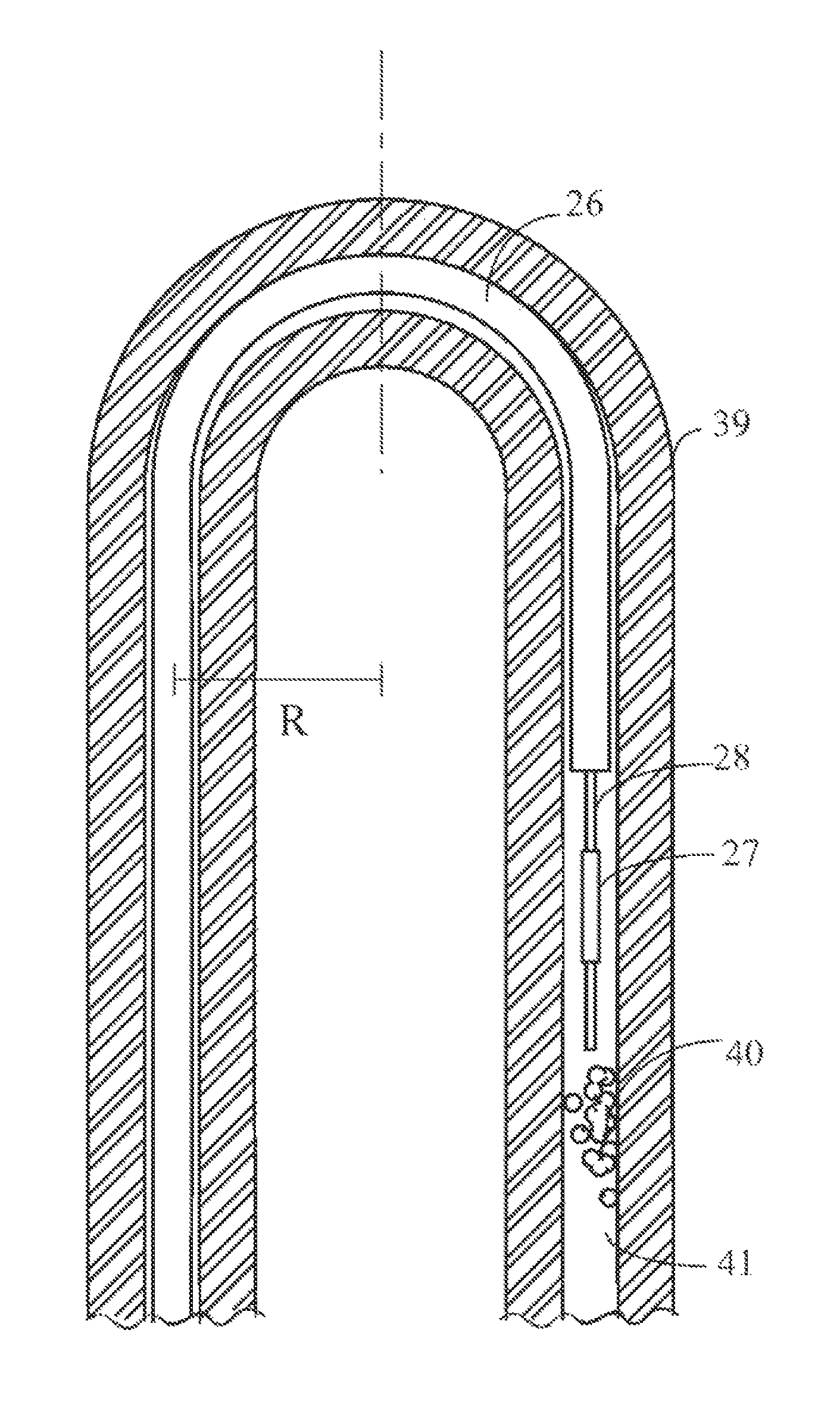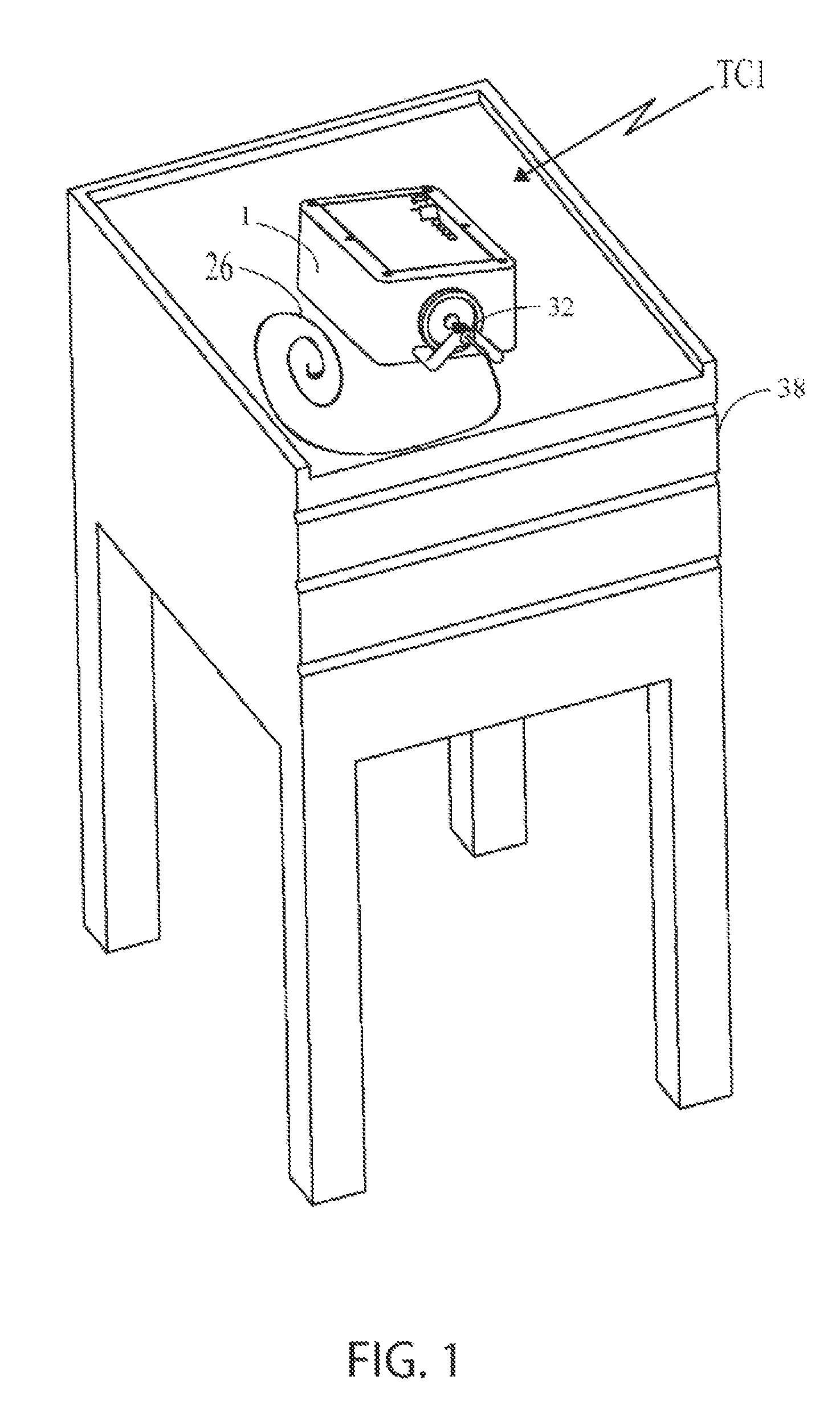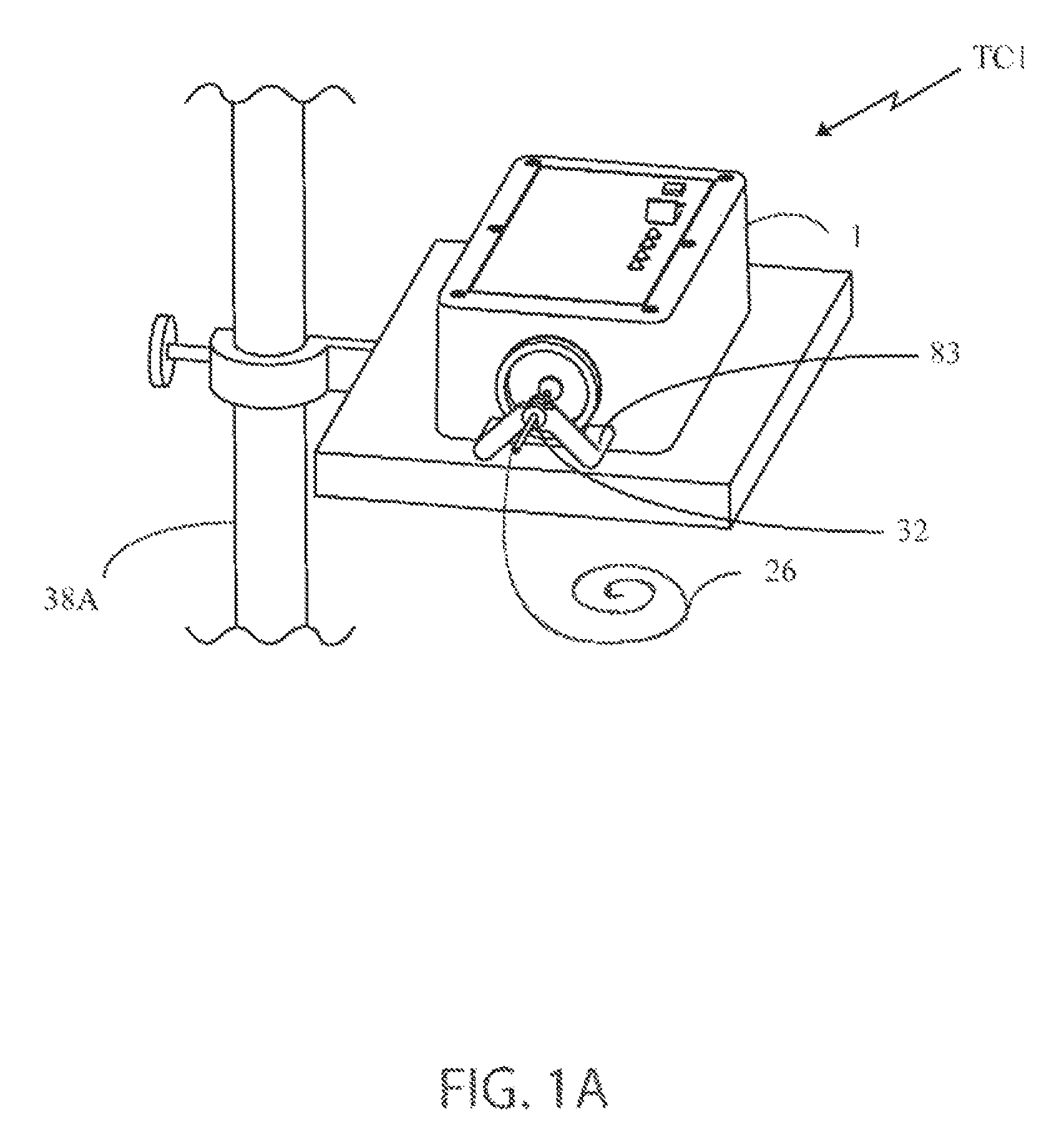Devices and methods for clearing occlusions and for providing irrigation in in-situ artificial and natural lumens
a technology of occlusion and device, which is applied in the field of cleaning or clearing devices, can solve the problems of gj- and j-tube obstructions that are difficult to clear, gj- and j-tubes are particularly difficult, and the standard nursing protocol to clear occlusions is time-consuming at best and is often unsuccessful
- Summary
- Abstract
- Description
- Claims
- Application Information
AI Technical Summary
Benefits of technology
Problems solved by technology
Method used
Image
Examples
Embodiment Construction
[0108]The preferred embodiments of this present invention are illustrated in FIGS. 1-29E with the numerals referring to like and corresponding parts.
[0109]The present inventions are portable devices, as well as methods for such devices, for effectively removing, moving or breaking up a clog from the internal portions of an artificial tube or catheter, enteral tube, and preferably a feeding tube, including pediatric feeding tubes. The action of removing clogs and clearing artificial tubes can also be referred to as a “maintenance action”.
[0110]As will be discussed in detail later, there are basically two types of tube clearers (TC) disclosed herein, both of which are mechanical tube clearers. The first type of tube clearer TC1 includes several embodiments that generate reciprocating motion of a clearing member for removing, moving or otherwise breaking up a clog in the artificial tube. This tube clearer TC1 is preferred for use in nastrogastic (NG) feeding tubes, although it should b...
PUM
 Login to View More
Login to View More Abstract
Description
Claims
Application Information
 Login to View More
Login to View More - R&D
- Intellectual Property
- Life Sciences
- Materials
- Tech Scout
- Unparalleled Data Quality
- Higher Quality Content
- 60% Fewer Hallucinations
Browse by: Latest US Patents, China's latest patents, Technical Efficacy Thesaurus, Application Domain, Technology Topic, Popular Technical Reports.
© 2025 PatSnap. All rights reserved.Legal|Privacy policy|Modern Slavery Act Transparency Statement|Sitemap|About US| Contact US: help@patsnap.com



